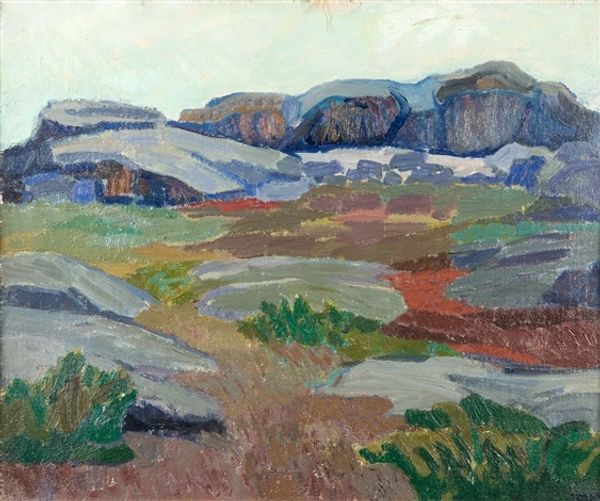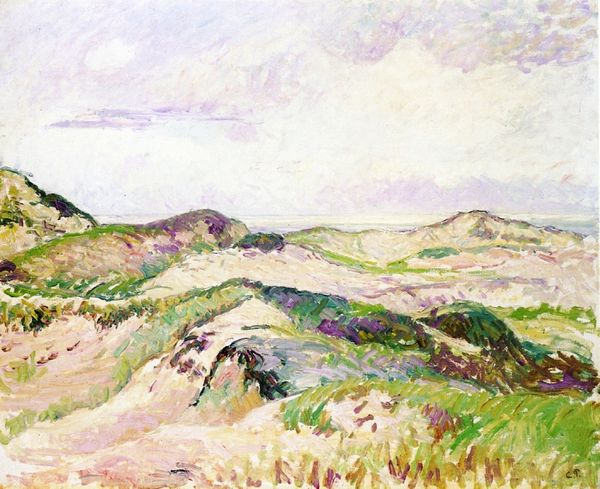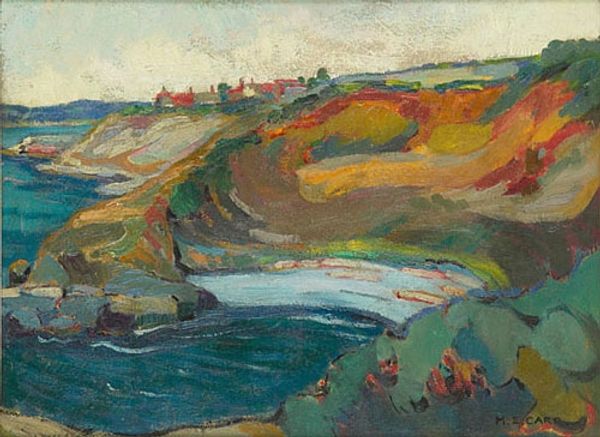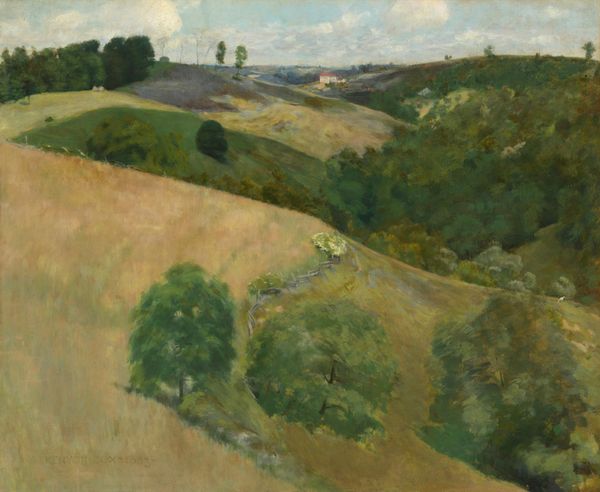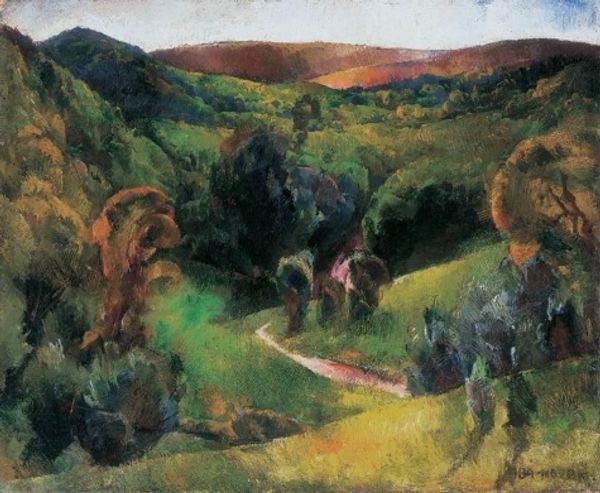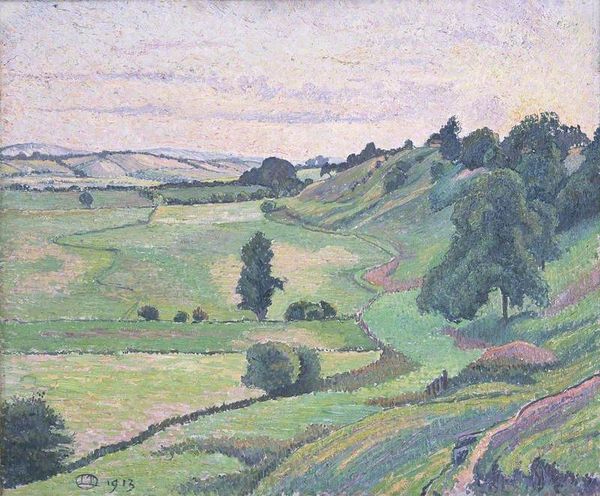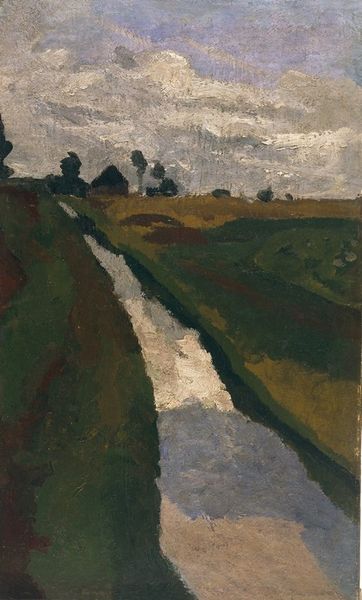
View from the Old British Trenches- Looking towards La Boisselle, Courcelette on the Left, Martinpuich on the Right 1917
0:00
0:00
Copyright: Public domain
Editor: So this is "View from the Old British Trenches" by William Orpen, painted in 1917. It’s an oil painting. There's something hauntingly quiet about this landscape. How do you interpret this work? Curator: That stillness speaks volumes, doesn't it? Look at the way Orpen uses color – the muted greens and browns of the ravaged earth, contrasted with the stormy sky. The palette carries emotional weight. But have you considered what the trenches themselves symbolize? Editor: Destruction, obviously, and the brutality of trench warfare? Curator: Indeed, but consider deeper symbols. The trench acts as a rupture in the landscape, a literal and metaphorical wound. The eye is led into the depths. Think about the psychological weight of enclosure, fear, and the unseen enemy in that dark space. Consider the collective trauma imprinted onto this landscape, and into those spaces. The rolling landscape above acts as the future these soldiers will not have. It holds an almost cruel sense of promise, juxtaposed against the very immediate, threatening now. The horizon line, in a painting like this, is more than just a visual cue - what might that thin blue band on the horizon invoke for the men huddled within the trenches below? Editor: That makes so much sense. It's not just a scene, it's loaded with a collective history and dread of the present. Curator: Precisely. And the vagueness lends universality to the historical specificity of it. It becomes not just one view of the Somme but a symbol of war’s scarring impact on both the land and the human psyche. We can feel this loss today when viewing this work. Editor: Wow, I’ll never see war landscapes the same way again! Thank you for making me aware of its power as an emotive and lasting image.
Comments
No comments
Be the first to comment and join the conversation on the ultimate creative platform.
